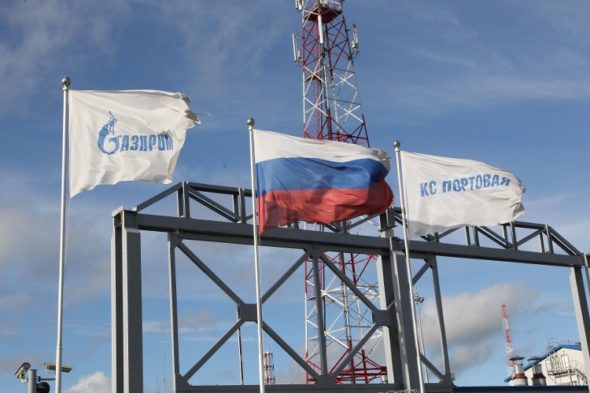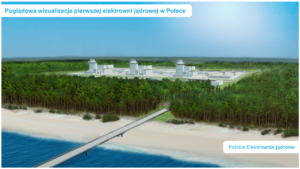The challenge of installing a gas grid across Russia is becoming increasingly political each year and impacts the image of both federal and regional authorities among the Russian society. The current discontent as well as the dropping trust in the government and the president made this issue a priority for the coming years. However, the reality is that geopolitics is still more important than the wellbeing of the society – Mariusz Marszałkowski, editor at BiznesAlert.pl, writes.
A long history
At the end of 2020 another five-year long (2016-2020) plan to construct a gas grid has been concluded. However, the story goes back to 2005 and Vladimir Putin’s second term, when the plan to build gas connections across the country became a federal project.
In 2005, the gas network in Russia covered 55 percent of the country. Since then Gazprom has build over two thousand gas pipelines with a total length of over 34 thousand kilometers. According to the company, as at 1 January 2021, 71.4 percent of the country is covered by a gas network. In other words, each year one percent of the country is covered with new gas pipelines. However, this average is not reliable, since at the end of the first five-year plan (2005-2010), 63.4 percent of the country had access to gas from pipelines, which means the figure increased by 8 percent within 5 years. In 2016 at the end of the second five-year plan, 66.2 percent of the country had a gas grid, which was an increase of a little less than 3 percent. The latest plan that was implemented between 2016 and 2020 added another 5 percent. Over the last 15 years, Gazprom has spent about RUB 400 bn (USD 5.36 bn) on expanding the Russian gas network. The figure is far from staggering when compared to Gazprom’s geopolitical „mega-projects”. Nord Stream 1 alone cost almost RUB 700 bn (USD 9 bn), the Turkish Stream gas pipeline cost another RUB 650 bn (USD 8 bn). According to unofficial information, the company spent at least RUB 1.1 trillion (USD 15 bn) on the Power of Siberia gas pipeline, while up until now the Nord Stream 2 pipe has cost at least RUB 900 bn (USD 11 bn).
The Kremlin’s, or Putin’s, latest plans say that by 2030 at least 85 percent of the country should be connected to the national gas grid. This means within less than nine years, Gazprom has to double the speed of its work, which entails bigger investment outlay. According to the estimates by Russia’s energy ministry, the cost of installing a grid that would cover 85 percent of the country by 2030 will be at RUB 1.9 trillion, and Gazprom will have to arrange the money.
Kremlin’s image issue
Russia has the biggest documented gas deposits in the world. It is also a global leader when it comes to gas extraction. 2019 was a record-breaking year in which 738 bcm was extracted and even though the output slumped in 2020 to 692 bcm , the numbers are still impressive. Over 170 bcm is exported to states outside the former Soviet Union, and about 30 bcm is sold to the Commonwealth of Independent States (incl. Belarus, Moldova, Armenia). For millions of Russians (according to research by the Institute of Economic Forecasting of the Russian Academy of Sciences, 5.5 million households in Russia, or over 14.3 m citizens, want to have access to gas), who are facing issues with access to heating fuel, the pollution it generates, as well as other problems, it is embarrassing that the state is focused on delivering gas to far-away countries, but is unable or doesn’t want to provide access to gas to the people who live in the Ural, Siberia or the Far East. Considering the dropping public support for Vladimir Putin and the Russian government in general, matters related to comfort, the economy, security and health are becoming increasingly important and in the future may generate social unrest.
It is also misleading to talk about the average level at which various parts of the country are equipped with gas pipelines. While a few federal subjects in Russia managed to provide access to gas at 100 percent (e.g. Tatarstan, Belgorod), 23 subjects (out of 83, without the occupied Crimea and Sevastopol) have a gas grid that covers less than 20 percent of their territory, while in case of 11 subjects there aren’t any plans to lay down gas pipes at all. This pertains mostly to Eastern Siberia and the Russian far east, but also to a big part of the Murmansk, Arkhangelsk and Karelia oblasts. The case of Sakhalin is especially interesting. In 2020, 38 percent of the island was covered with gas pipelines, even though since 2009 (launch of the LNG export terminal Sakhalin-2) over 200 bcm of gas has been extracted there. Only 11 bcm out of that figure was actually used on the island.
Why is this so hard?
The lack of funds is not the only pitfall Russia is facing on its road to build gas infrastructure across the entire country. The Russian Accounts Chamber (counterpart of Poland’s Supreme Audit Office) published a report, which said that between 2017 and 2020 the plan to build the Russian gas grid was completed only at 15 percent. According to the Chamber, one of the problems is the lack of appropriate coordination between Gazprom and the regions. Gazprom, as the operator of Russia’s Unified Gas Supply System, i.e. the country’s transmission, storage and processing system of natural gas, is responsible for building high- and low-pressure facilities. The idea is that the company builds high pressure gas mains for a given region, whereas the construction of low-pressure gas pipelines is the responsibility of administrations that govern the federal subjects, regions and towns.
This is where the problem with bankrolling the rest of the investments emerges, as even though Gazprom often holds up its end of the agreement, individual towns and villages cannot find the money to finish the plan. This state of affairs can last for years. Once the distribution pipelines are built, another problem emerges, i.e. the cost of connecting the so-called last mile, which has to be covered by the household owners. There are many operators of the distribution system in Russia, which means the cost of such a connection is different across the country. In some places, the local government subsidizes the costs borne by the households, but not everywhere. For instance in the Moscow region, thanks to a project „Gas to your home for RUB 75 thousand” (USD 1100), home owners could connect to the grid for that sum. However, the price did not include the materials and heating installations, which meant it was actually over RUB 115 thousand (over USD 2 thousand). In other regions such subsidies are impossible because of meager local budgets. Most often the cost of connecting one’s house to a gas grid (up to 100 meters) is somewhere around RUB 40-70 thousand (USD 540-930), additionally one needs to pay for the household gas installation, which is at about RUB 60 thousand (USD 820). The total cost, including the installation and the plans is on average RUB 400 thousand (USD 5400). However, when the distance from the house to the grid is over 100 meters, the connection may exceed even RUB 3 million (USD 40 thousand). This is why home owners despite technical possibilities often decide not to connect to the grid, because they can’t afford it.
Apart from the cost, there are other difficulties as well, including the need to acquire permits and blueprints for the connection. It is expensive to hire a professional company that will collect all the necessary documents and permits, and doing it on one’s own may prove too demanding, and for many potential customers even impossible.
The monopolist and the rest
Gazprom’s monopolistic position doesn’t help to build a country-wide gas grid. The company does not care about selling gas to, e.g. far-away villages in the north of the Krasnoyarsk Krai. Investments in gas pipelines, pumping stations and the entire infrastructure will never return, whereas the operation costs may exceed annual revenue from such projects. Especially that the Russian retail gas market is heavily regulated, which means Gazprom (as the monopolist) has to sell gas to retailers under its market value. Other gas companies are exempt from this duty (e.g. Novatek), but in their case business clients are more important as they have constant demand for gas. In case of individual customers the demand is dictated mostly by the season of the year and the temperature.
Since Gazprom is a monopolist, it is the only company that can export gas, which, implicitly, should finance the expansion of the gas grid. However, so far only a small percentage of the company’s revenue is invested in domestic projects whose goal is to improve the availability of the fuel to Russians.
According to the Wygon consulting group, the energy sector is responsible for 42 percent of demand for gas in Russia, the gas extraction sector uses as much as 19 percent of the natural gas (long-distance gas transport, the so-called technical gas, filling up gas storage units, powering turbochargers in pumping stations, etc.), the chemica;, petrochemical and cement industries use 15 percent, whereas 14 percent is used by individual customers and 10 by utilities (including heating plants). Therefore, decisions about investments are made with consideration to large gas consumers that, in this case, can have a positive impact on their neighborhood.
The construction of new gas pipelines is also undermined by the fact that Russian companies are afraid of problems with collecting money for supplying gas. Gazprom is at risk of not getting paid for the delivered gas by individual customers. At the end of August, during a meeting with Vladimir Putin, Alexei Kudrin, Chairman of the Accounts Chamber, said that gas consumers owned Gazprom over RUB 331 bn (USD 4.4 bn). The figure is higher than the company’s quarterly revenue for gas sales on the domestic market (data for January-March 2020), which was RUB 322 bn (USD 4.3 bn) and it is four times as high as the quarterly revenue from export to the Commonwealth of Independent States states (data for January-March 2020), which was RUB 90 bn (USD 1.2 bn). At the beginning of 2020 the debt of Gazprom’s clients was at RUB 175 bn (USD 2.33 bn). Kudrin stated, without pointing specific regions, that the residents of Caucasian federal subjects were responsible for the majority of the debt.
Local conditions
Expanding the gas grid also depends on local circumstances due to which, for various reasons, this process doesn’t match the expectations of federal authorities. At the beginning of the 21st century the process went rather smoothly and quickly and at a reasonable cost, but today the „easy” locations are running out. Increasingly more often, companies have to build longer and longer sections in geographically difficult locations, which reach villages that have between a dozen and a few hundred residents. This is why the speed of construction is dropping, but the costs are going up. Thus, Russian experts have started to question whether the money spent on the projects that are to be concluded by the end of the decade will be enough.
Additionally, according to some observers of the Russian energy scene, including Igor Yushkov and Pavel Zavalny, the federal authorities have become in a way a hostage of their own drive to develop a gas grid across the entire country. Both experts claim that a gas grid that would cover 80 percent of the country is the maximum that can be achieved. The remaining percent of the Russian territory will not have access to gas mostly because of logistical and practical reasons. There is no economic point in connecting a village that has a few dozen residents and is located hundreds of kilometers away from the closest gas pipeline to the country’s gas grid. Moreover, for some locations LNG would seem to be a more suitable solution. However, this method is not the cheapest one. Another factor is that gas is just a source of energy used for heating houses and water, as well as cooking. In eastern Siberia gas has an alternative in the form of water, which ensues large amounts of power. It is a lot cheaper than natural gas and investment costs are incomparably lower.
However, this is where the most important feature of Russia’s far east comes into play. That feature stems directly from Russia’s political and economic system. One of the main areas of mining lignite is located in Eastern Siberia (among others in the Kemerovo region, the so-called Kuzbass). It includes 18 open pit mines and 8 deep mines. All are owned by the SUEK company, which is owned by one of the richest Russians – Andrey Melnichenko. At the same time SUEK owns the SGK energy company, which has 5 large heating and power stations as well as 18 local heating plants, which in total generate 16 GW of power and 26 GW of thermal input. All power stations are fuelled with lignite that is extracted in coal mines, which belong to the mother company – SUEK.
This situation has not changed for years and will not as long as Melnichenko is an oligarch that is loyal to the Kremlin. If gas entered this scene, it would spell trouble for Melnichenko as well as regional authorities, which would have to face the problem of increasing unemployment due to the closing down of the less-profitable coal mines. This state of affairs is beneficial to the interested parties. But of course, regular residents are the ones that are suffering due to the awful air quality. Nevertheless the authorities are still defending coal, claiming that if it wasn’t for the resource, the residents would have to pay more for both power and heat. This is the key argument during discussions with the residents who are disappointed with the fact that they don’t have access to gas.
Instructions from the Kremlin
The gas grid is an important element of the Kremlin’s domestic policy. It is to symbolize the over twenty years of Putin’s reign and his fight for Russians to have access to gas – the fuel that Russia is abundant with. However, the problem is that there is enough gas, but only for geopolitical projects, such as Nord Stream, the Power of Siberia and the Turkish Stream. These ominously sounding projects are to demonstrate Russia’s political power. The need to accelerate the construction of the grid in new areas of Russia is another element of a political game the Kremlin is playing with Russians, especially in view of the dropping popularity of the government and the Kremlin’s host himself. This is why, recently the Kremlin has given the ministry of energy two rather revolutionary proposals. The first one is that one gas transmission system operator should be established. It would be responsible for implementing the entire project – from Gazprom’s high-pressure gas pipelines to ovens in individual homes. The other revolutionary idea is for the state to pay for the „last mile”. This would mean, the residents would not have to pay for the costly connections. It remains to be seen whether these suggestions are true. Their implementation would cost additional billions of dollars, which at this point Gazprom does not have. When the company did have it, nobody proposed this idea.









